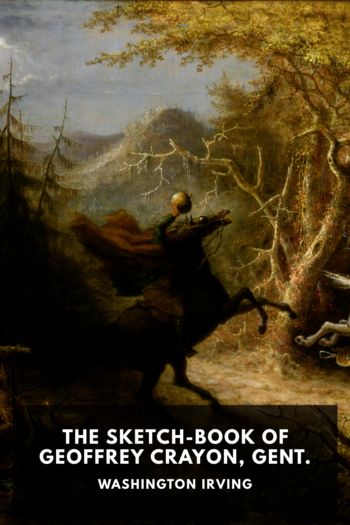Loverly:The Life and Times of My Fair Lady (Broadway Legacies) by McHugh, Dominic (e reader comics TXT) 📕

Read free book «Loverly:The Life and Times of My Fair Lady (Broadway Legacies) by McHugh, Dominic (e reader comics TXT) 📕» - read online or download for free at americanlibrarybooks.com
Read book online «Loverly:The Life and Times of My Fair Lady (Broadway Legacies) by McHugh, Dominic (e reader comics TXT) 📕». Author - McHugh, Dominic
The matter came to a head early in 1955. On January 18, Halliday reported to the Guild on the audition of Lerner and Loewe’s songs held the previous night in the presence of Levin, Lerner, Loewe, the designer Mainbocher, Mary Martin, and Halliday. According to the memo, both he and Martin were “not satisfied with the lyrics or musical material the score offers her.” They thought many things in it were “good,” but “Mary in particular did not get any particular lift out of the songs planned for the part of Liza.”14 The memo continues by stating that Martin and Halliday would not commit themselves at this time, even if it meant that Lerner and Loewe took the show to others. Martin still felt that “this is the best role and the best story” for her and confessed that “this is a decision they have reached with great regret.” Additionally, the memo mentions a meeting due to take place between Halliday and Harold Freedman, who had been appointed by the Chase Bank to decide to whom to give the rights to Pygmalion. Underneath the memo, a handwritten note says that Halliday phoned after this meeting and that “Harold strongly upholds the Guild interest” in the show.
In early February, the narrative took an unexpected turn as Rodgers and Hammerstein, who had considered writing the Pygmalion musical all those years earlier, now re-entered the picture and held four conversations with the Guild. On February 8 at 2:30 p.m., Helburn met with Rodgers at her apartment, and proposed that he and Hammerstein now write the show. This would ensure that Martin would agree to play Eliza, which in turn should help guarantee that the Guild be given the rights to the play (though one wonders how enthusiastically Rodgers and Hammerstein would have capitulated to the idea of allowing the Guild to produce their shows again, after having parted ways following Allegro in 1947). Rodgers “seemed actively interested” and “promised to discuss the matter further with Mr. Hammerstein.” The following day, he rang Helburn and confirmed that Hammerstein was intrigued. A meeting was arranged for February 10, but Hammerstein wished “to be sure that [the] story problems are clear so that he would not encounter any major writing snags.” Helburn’s assistant then reported to Harold Freedman, who “expressed interest” but wanted to create a safety net to protect them if Rodgers and Hammerstein withdrew after an agreement was reached; Freedman would “have to place a substantial financial forfeit in the contract.” Hunter also phoned Halliday, who was “enthusiastic” and “delighted.” The bottom of the page declares: “ALL PARTIES SAYING THEIR PRAYERS!”15
Perhaps Rodgers and Hammerstein were still not convinced they could overcome the problems they had always had with the book, for there is no further record of their work on the show. In any case, Lerner and Loewe had proceeded to such an extent that they had now completed a significant portion of the show, putting them ahead of the game. In The Street Where I Live, Lerner explains that he also tipped the balance by asking Freedman to represent him and Loewe, so that it was no surprise when Freedman advised the Chase Bank to give them the rights for Pygmalion. With the permission, the inspiration, and the added satisfaction of succeeding where Rodgers and Hammerstein had given up hope, they were now unstoppable on the road to completing the musical within a year.
THE SEARCH FOR A CHOREOGRAPHER
December 1954–June 1955
Meanwhile, Herman Levin proceeded to put the production together. Among his papers is a telegram of December 21, 1954, from Michael Kidd (choreographer of stage shows such as Guys and Dolls and films including The Band Wagon) to Lerner, in which he expressed interest in the show and asked if any of the script was available for him to read.16 In Lerner’s autobiography, Kidd is the subject of a memorably embarrassing anecdote. Lerner calls Kidd “a rather unemotional fellow” and says that his reaction to “You Did It” was simply, “That’s wrong” (representative of his generally dismissive attitude toward the material). Intriguingly, Lerner also says that “The problem of selecting a choreographer for Pygmalion was … complicated by the dramatic fact that neither Moss [Hart], Fritz nor I felt the show required a great deal of dancing,” so it was difficult to entice someone to play what seemed like a secondary role in the production.17
The ball scene from My Fair Lady, showing (left to right) Christopher Hewitt (Zoltan Karpathy), Julie Andrews (Eliza), and Rex Harrison (Higgins) (Photofest)
In Lerner’s formulation, Hart is categorically included as part of the decision not to have much dancing in the show, and Lerner also claims that when the score was played and sung for the none-too-impressed Kidd, Hart became angry with the choreographer and refused to contemplate teaming up with him.18 However, since Hart only agreed to direct the show around June 12, 1955, and signed his contract some time after June 18, he can surely have had no major input into decisions such as choosing the choreographer until this later period.19 Yet Lerner first spoke to Kidd about the show in mid-January—his





Comments (0)